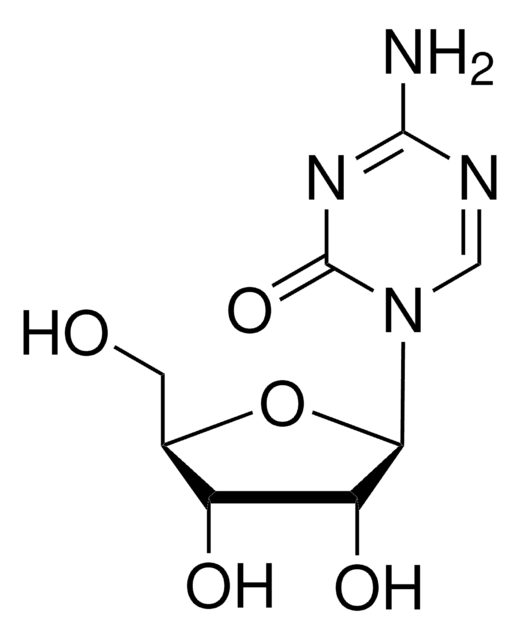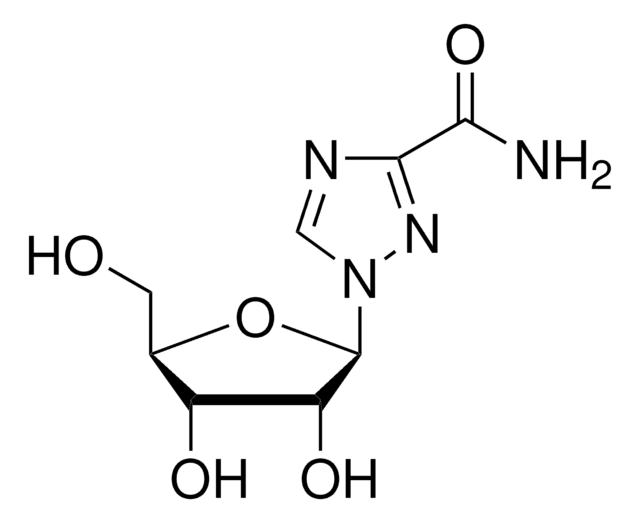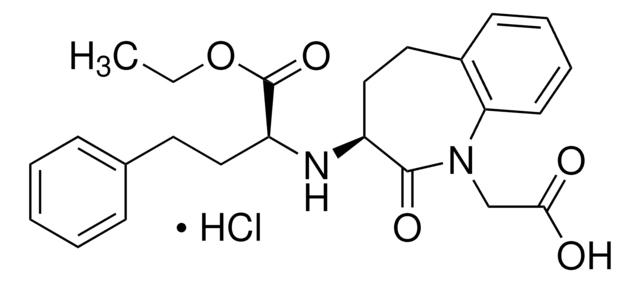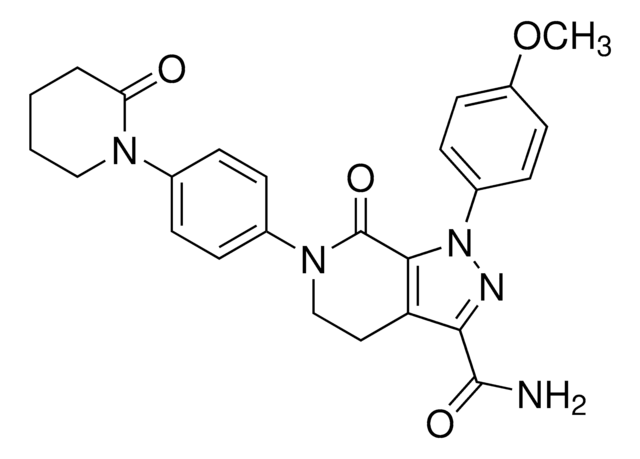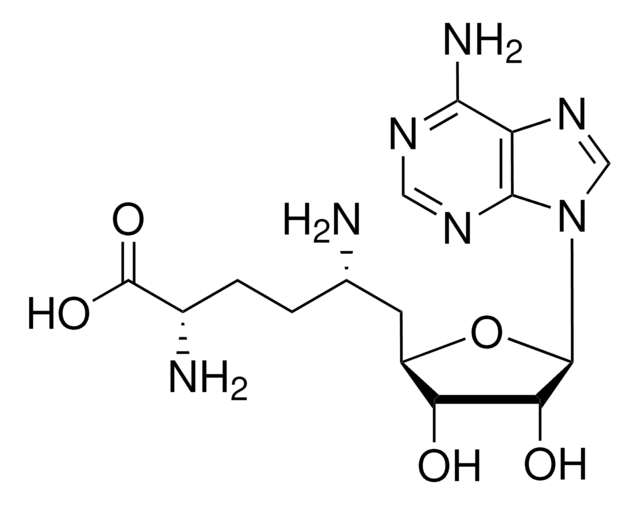SML3607
Etamsylate
≥95% (HPLC)
Synonym(s):
2,5-Dihydroxybenzenesulfonic acid diethylamine salt, CID 17506, Diethylammonium 2,5-dihydroxybenzenesulfonate
Sign Into View Organizational & Contract Pricing
All Photos(1)
About This Item
Empirical Formula (Hill Notation):
C6H6O5S·C4H11N
CAS Number:
Molecular Weight:
263.31
MDL number:
UNSPSC Code:
12352200
NACRES:
NA.77
Recommended Products
Quality Level
Assay
≥95% (HPLC)
form
powder
storage condition
desiccated
color
white to beige
solubility
DMSO: 2 mg/mL, clear
storage temp.
-10 to -25°C
Biochem/physiol Actions
Etamsylate is a haemostatic agent that is used for the management of blood loss. Apparently etamsylate increases capillary wall resistance and platelet adhesives by inhibition of the biosynthesis of prostaglandins causing platelet disaggregation in a presence of vascular wound. Recent studies suggest that etamsylate antagonizes anti-coagulant activity of heparin.
Caution
Hygroscopic
Storage Class Code
11 - Combustible Solids
WGK
WGK 3
Flash Point(F)
Not applicable
Flash Point(C)
Not applicable
Certificates of Analysis (COA)
Search for Certificates of Analysis (COA) by entering the products Lot/Batch Number. Lot and Batch Numbers can be found on a product’s label following the words ‘Lot’ or ‘Batch’.
Already Own This Product?
Find documentation for the products that you have recently purchased in the Document Library.
M Yolanda Cobo-Nuñez et al.
European journal of pharmacology, 827, 167-172 (2018-03-21)
Etamsylate is indicated for several anti-hemorrhagic indications in human and veterinary medicine. However, etamsylate has been shown to be effective only in specific hemorrhagic situations. Furthermore, mechanism of action of etamsylate is not known but recent research has shown its
Qing Yao et al.
Kidney & blood pressure research, 42(1), 156-164 (2017-04-11)
In this retrospective study we aimed to compare the effect of tranexamic acid (TXA) vs etamsylate, two hemostatic agents, on hematuria duration in autosomal dominant polycystic kidney disease (ADPKD) patients with persistent gross hematuria. This is a retrospective study of
Our team of scientists has experience in all areas of research including Life Science, Material Science, Chemical Synthesis, Chromatography, Analytical and many others.
Contact Technical Service

